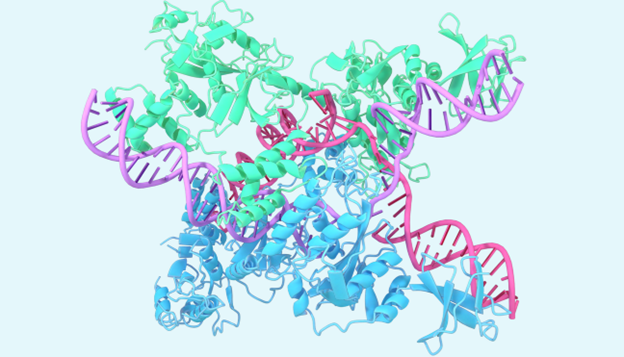Science doesn’t move this fast. At least it didn’t until AlphaFold arrived.
For fifty years, biologists wrestled with a stubborn question: given a protein’s amino-acid sequence, can the three-dimensional shape it takes in a cell be predicted?
Why is this important? Because the shape of each protein matters hugely. Its structure hints at what it does—how it binds, how it moves, where a drug might precisely fit—with the goal of minimizing side effects through that precision.
AlphaFold solved that staggeringly difficult puzzle. 200 million times. In about a year.
Launched in July 2021, Google’s AlphaFold by August 2022 had predicted 3D structures for roughly 200 million known proteins in what Google DeepMind CEO Demis Hassabis called “a billion years of PhD time.” Hassabis was referring to the rule of thumb that determining one protein structure experimentally takes a single PhD student roughly four to five years. Scaled to ~200 million proteins, that’s on the order of a billion PhD-years.
What is AlphaFold?
AlphaFold is an artificial intelligence system from Google DeepMind that predicts a protein’s 3D structure directly from its amino-acid sequence. Trained on decades of experimental data, the system produces accurate models, on average within the width of an atom.
The culmination of this staggering breakthrough was AlphaFold’s release in partnership with the European Bioinformatics Institute of a free database of ~200 million predicted proteins, so labs everywhere could use the results right away.
That shift turned a decades-long bottleneck into a practical starting point for design and discovery.
From epic breakthrough to everyday practice
Accuracy is what makes this leap forward in biology real for working scientists. “Atom-width” precision is close enough to guide experiments, such as design a mutant, sketch where a molecule might dock, or pick the first hypothesis to test. Experiments can start much further along, accelerating results.
The open database matters just as much. Putting millions of structures in one searchable place unlocked collaboration among scientists. With access to the database and a clear plan, a small team could get quickly to work.
What changed the moment the database went live
When a once-intractable research roadblock becomes a matter of simply looking up a protein structure, researchers can spend their time differently. The question shifts from “Can we get a [protein] structure?” to “What does this structure let us try?”
AlphaFold also points to a larger pattern in AI. Systems that learn from experience, guided by clear goals and quick feedback, go beyond copying human output. They rapidly discover and distill patterns that would have taken researchers forever and a day to spot through manual research.
And that’s the connection from the strategies revealed in AlphaGo’s Move 37 to the biology lab—from AlphaGo to AlphaFold. The same recipe that found a new move in a 2,500-year-old game made protein shapes arrive at lightspeed and turned a decades-long bottleneck into rocket fuel for biological research.
FAQs
Q1. What is AlphaFold in simple terms?
A: AlphaFold is an AI that predicts a protein’s 3D shape from its sequence fast and accurate enough to guide experiments.
Q2. How accurate are AlphaFold predictions?
A: On average, models are accurate to about an atom’s width, which is enough precision to choose the first experiments to run.
Q3. Why does the AlphaFold database matter?
A: It puts ~200 million predicted structures in one searchable place so labs can look up likely shapes and move faster.
Q4. Can AlphaFold replace experiments?
A: No. It narrows options and suggests hypotheses; labs still validate with testing.






Leave a Reply